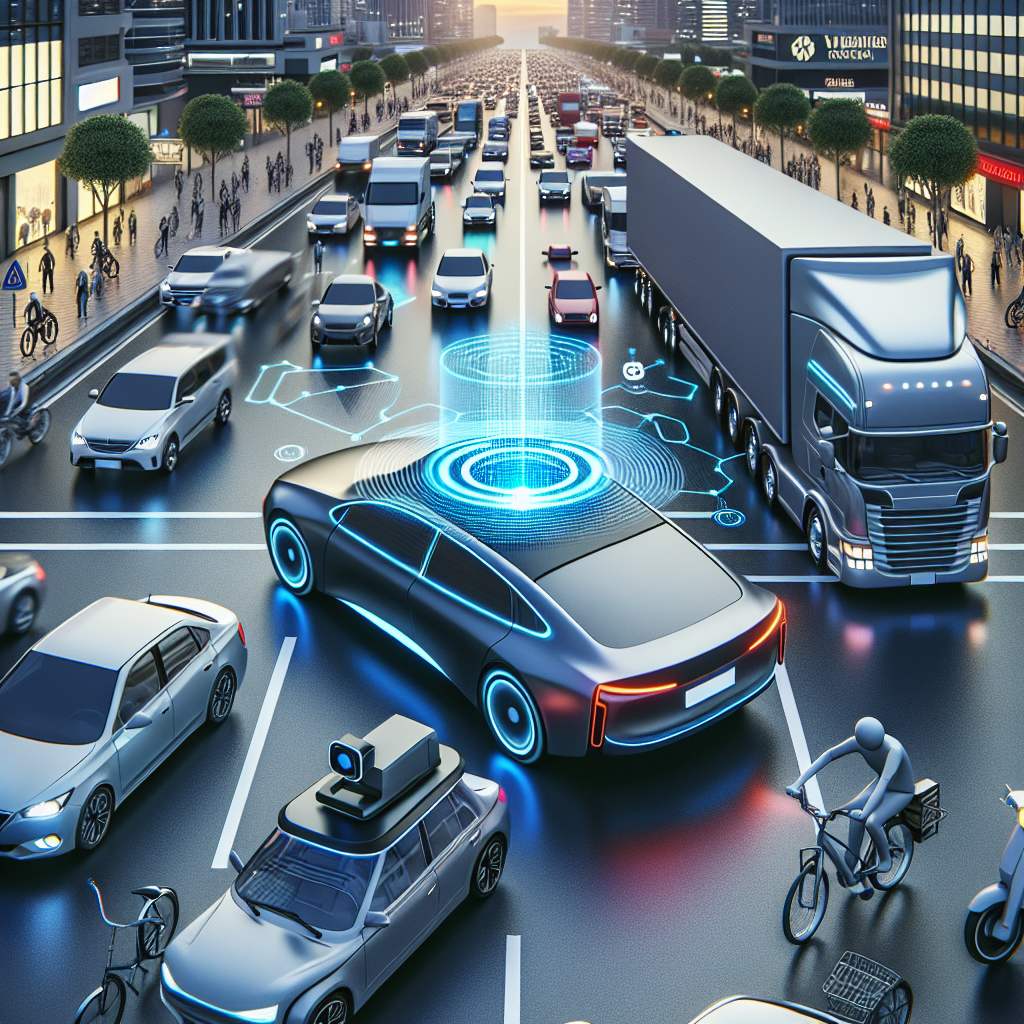The Role of AI Tools in Autonomous Vehicles
Autonomous vehicles, also known as self-driving cars, have been a topic of much interest and intrigue in recent years. These vehicles use a combination of sensors, cameras, and artificial intelligence (AI) to navigate and operate without human intervention. One of the key components that enable autonomous vehicles to function effectively is AI tools. In this article, we will explore the role of AI tools in autonomous vehicles and how they are shaping the future of transportation.
AI Tools in Autonomous Vehicles
AI tools play a crucial role in enabling autonomous vehicles to operate safely and efficiently. These tools are used to process vast amounts of data from sensors and cameras in real-time, make decisions on how to navigate the vehicle, and respond to changing road conditions. Some of the key AI tools used in autonomous vehicles include:
1. Machine Learning: Machine learning algorithms are used to train autonomous vehicles to recognize and respond to different objects and obstacles on the road. These algorithms analyze data from sensors and cameras to learn patterns and make predictions about the environment around the vehicle.
2. Computer Vision: Computer vision is a branch of AI that enables autonomous vehicles to “see” the world around them. This technology allows vehicles to detect and recognize objects such as pedestrians, cyclists, and other vehicles, and make decisions based on this information.
3. Deep Learning: Deep learning is a subset of machine learning that uses neural networks to process complex data and make decisions. Autonomous vehicles use deep learning algorithms to interpret data from sensors and cameras, identify patterns, and make decisions on how to navigate the road.
4. Sensor Fusion: Sensor fusion is the process of combining data from multiple sensors to create a more accurate and comprehensive view of the vehicle’s surroundings. Autonomous vehicles use AI tools to integrate data from sensors such as lidar, radar, and cameras to make informed decisions about their environment.
Benefits of AI Tools in Autonomous Vehicles
The use of AI tools in autonomous vehicles offers numerous benefits, including:
1. Improved Safety: AI tools enable autonomous vehicles to detect and respond to potential hazards on the road, reducing the risk of accidents and collisions.
2. Increased Efficiency: AI tools can optimize the driving behavior of autonomous vehicles, leading to smoother, more efficient journeys and reduced fuel consumption.
3. Enhanced User Experience: Autonomous vehicles equipped with AI tools can provide a more comfortable and enjoyable ride for passengers, with features such as adaptive cruise control and lane-keeping assistance.
4. Reduced Traffic Congestion: By improving traffic flow and reducing the likelihood of accidents, autonomous vehicles can help alleviate congestion on busy roads and highways.
Challenges of AI Tools in Autonomous Vehicles
While AI tools offer many benefits for autonomous vehicles, there are also several challenges that need to be addressed. Some of the key challenges include:
1. Data Privacy and Security: Autonomous vehicles collect and process large amounts of data, raising concerns about privacy and security. Ensuring the protection of personal information and preventing cyber attacks are critical challenges for the development of autonomous vehicles.
2. Regulatory Compliance: The introduction of autonomous vehicles raises questions about the legal and regulatory frameworks that govern their operation. Ensuring that autonomous vehicles comply with existing laws and regulations is a complex challenge for developers and policymakers.
3. Ethical Considerations: Autonomous vehicles must make split-second decisions in potentially life-threatening situations, raising ethical questions about who should be held responsible in the event of an accident. Resolving these ethical dilemmas is a significant challenge for the adoption of autonomous vehicles.
4. Technical Limitations: Despite advances in AI technology, autonomous vehicles still face technical limitations such as poor weather conditions, complex road environments, and unpredictable human behavior. Overcoming these limitations is a key challenge for the development of fully autonomous vehicles.
FAQs
Q: Are autonomous vehicles safe?
A: Autonomous vehicles have the potential to improve road safety by reducing human error, which is a leading cause of accidents. However, there are still challenges to overcome, and further testing and development are needed to ensure the safety of autonomous vehicles.
Q: How do autonomous vehicles navigate?
A: Autonomous vehicles use a combination of sensors, cameras, and AI tools to navigate and make decisions on the road. These tools analyze data from the surrounding environment to detect obstacles, predict movements, and plan the vehicle’s route.
Q: When will autonomous vehicles be available to the public?
A: Autonomous vehicles are already being tested on public roads in some regions, but widespread adoption is still several years away. The development of autonomous vehicles is a complex process that requires careful testing, regulation, and public acceptance.
Q: What are the potential benefits of autonomous vehicles?
A: Autonomous vehicles have the potential to improve road safety, reduce traffic congestion, and provide more efficient and convenient transportation options. They could also have a positive impact on the environment by reducing emissions and fuel consumption.
In conclusion, AI tools play a crucial role in enabling autonomous vehicles to operate safely and efficiently. These tools are used to process data, make decisions, and respond to changing road conditions. While there are challenges to overcome, the potential benefits of autonomous vehicles are significant, and they have the potential to transform the future of transportation.

